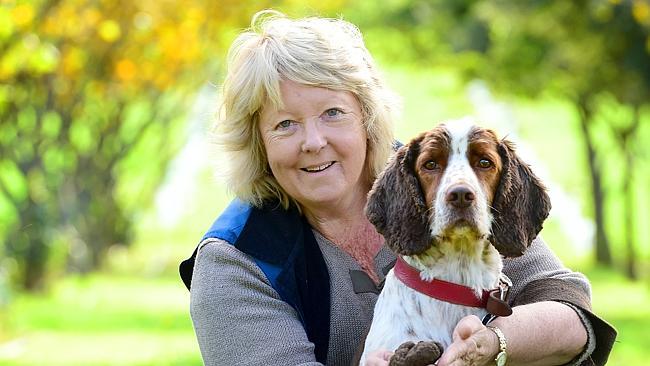The hunt for black truffles
The world’s most sought after fungus is easy to find if you’re a horny female pig. The rest of us pay through the nose.

To hunt black truffles, first you must create the universe.
After a few whiz-bangs across 13 billion or so years a precise medley of things needs to happen on Earth to get the truffle to grow, then ripen. The roots of a tree, such as an oak, need to be inoculated with the fungus. The soil in which it grows must be alkaline, pH 8 or so, and you must wait about five years for a truffle to grow.
To ripen, the soil needs to get very cold. Snow is wonderful, frost is great. But it cannot be waterlogged soil because a truffle does not thrive with wet feet. Sunlight must be allowed in through the trees and on to the ground where the truffles grow.
During World War II, many of the forests in which truffle grew were left abandoned, their canopies growing over and blocking the sunlight. Truffle production is only just recovering.
If a truffle dies it shrinks in the ground and releases it spores, continuing the process. But if it rots, this is aborted. Rot is bad.
All this is to say that when you hunt the truffle which is, by all standard measures, an inanimate object waiting for you in the ground, you must not scoff. What you are really hunting is a statistical anomaly.
“We need to know what it is that initiates the growth of the truffle,” says Jenny McAuley from Red Hill Truffles, an hour and 20 minutes outside of Melbourne on the Mornington Peninsula.
McAuley, who planted her first group of oak trees in 2005 in the hope of producing truffles, rescued Thomas, an English springer spaniel, from the pound. Thomas was trained by an ex-army animal specialist to sniff out truffles. Unlike the pigs used by some traditionalists in Europe, Thomas does not want to eat the truffle. But he gets a treat whenever he finds one.
The truffle is a very sexual fungus, McAuley says, and the female truffle-hunting pigs never needed to be trained to find the truffle because they thought they were looking for their mate.
“The pigs smell testosterone in the truffle, so if you were the truffle grower you had to be fast enough to get the truffle out of the pig’s mouth because the pig really wants to eat it,” McAuley says. Some old truffle hunters in France, she adds, are missing bits of their fingers, on account of the pigs.
Horny pigs? Missing fingers? No wonder they cost thousands of dollars a kilogram. It’s almost an arm and a leg.
Last year McAuley harvested just 25kg of the culinary rarity. The harvest this year has been about the same, although there is a bit of winter left to run.
We march behind her in awe as she leads Thomas through the numbered rows of oaks and hazelnuts while chirping “find the truffle” over and over again to the spaniel. Occasionally he sits on a spot where a truffle has already been harvested and begs for a treat. Not quite, buddy.
But then we find one, a glorious 101g black Perigord with dark, ripened flesh.
We are told to shove our nose into the rich, red dirt and sniff, not something I have done since I was escorted from a motorbike by gravity almost two decades ago.
This one, we all agree, smells like beetroot. It’s a first, McAuley says, but entirely valid. Our black gold has 87 aromas, apparently, which is a curious number. Use your own nose, however.
Truffle Melbourne is hosting a Red Hill pop-up this Saturday and Sunday. For $64 you can snag entry to the truffle marketplace, including a glass of wine and two dishes from the menu. Or you can go on your own truffle trail, including a hunt, on both days for $185. Max’s Restaurant, with stunning views over Phillip Island, is home to the event. And you’ll get to meet Thomas who is, indeed, a Very Good Boy. trufflemelbourne.com
